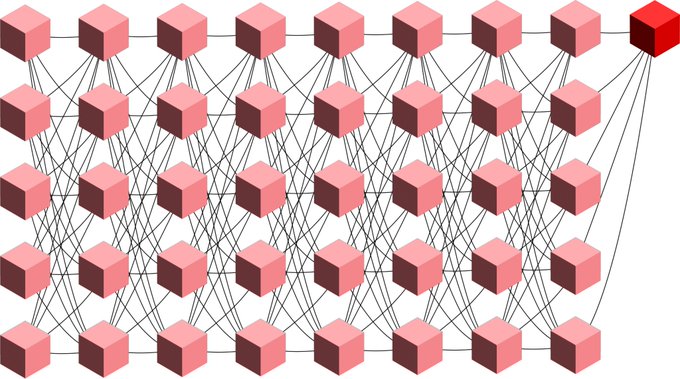The Massa architecture, also known as Blockclique, was created to re-design how current blockchains should work!
It aims to address the scalability challenges faced in the present. It achieves high transaction throughput while maintaining decentralization and security! Let’s take a closer look on how it works: Transaction Sharding and Multithreaded Block DAG: Massa employs a combination of two key concepts: transaction sharding and a multithreaded block Directed Acyclic Graph (DAG) architecture. Sharding involves distributing transactions into separate groups or “shards” that can be processed in parallel. Each shard represents a distinct thread in the network. Preventing Double Spending: To ensure security, Massa employs this mechanism called “transaction sharding” to prevent double-spending. Each address can only spend coins within a specific thread, as defined by the first bits of the address. This means that blocks from a particular thread only contain transactions with input addresses belonging to that thread. However, a transaction output can be any address, regardless of the thread of the input addresses. Compatible Transactions: A unique feature of the Massa architecture is that it allows nodes to create blocks in parallel with compatible transactions by construction. This means that nodes can include transactions in their blocks that are guaranteed to be compatible with one another.
Consensus Mechanism: Massa extends the Nakamoto consensus rule.
The Nakamoto consensus rule rates each chain of the block tree by assigning it a fitness score and produces new blocks by extending the chain with the highest fitness score. In Massa, this consensus rule is adapted to allow nodes to reach a consensus about the global set of compatible blocks, referred to as the “clique,” with the maximum fitness.
Parallel Block Creation: In the Massa architecture, blocks can be created in a fixed number of threads, and a block created in a specific thread references a parent block in each of the threads. This results in a multithreaded DAG structure. Nodes can still create forks in particular threads, but the consensus rule ensures that each thread behaves like a regular blockchain, taking into account earlier blocks in other threads while allowing slight desynchronizations between threads.
Simulation Results: This revolutionizing architecture has been extensively tested through simulations. These simulations, based on network parameters similar to those found in Ethereum (including thousands of nodes with specific bandwidth and latency), have shown that Massa can achieve high transaction throughput. With 32 parallel threads and a Proof-of-Stake Sybil-resistance mechanism, Massa can handle up to 10,000 tx/s with transaction confirmation times in the order of 40 seconds. Sequential Consistency: Unlike standard blockchains where nodes require the latest block to create the next one, Massa’s architecture allows nodes to create blocks in parallel without leading to forks. It ensures sequential consistency for coin debits for each address while allowing coin credits to be slightly desynchronized. The Massa architecture, with its Blockclique design, achieves high scalability by combining transaction sharding, a multithreaded block DAG, and an adapted consensus rule! It allows for parallel block creation, prevents double spending, and can handle thousands of transactions per second while maintaining decentralization and security











